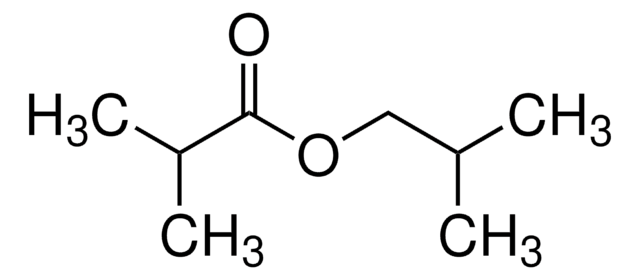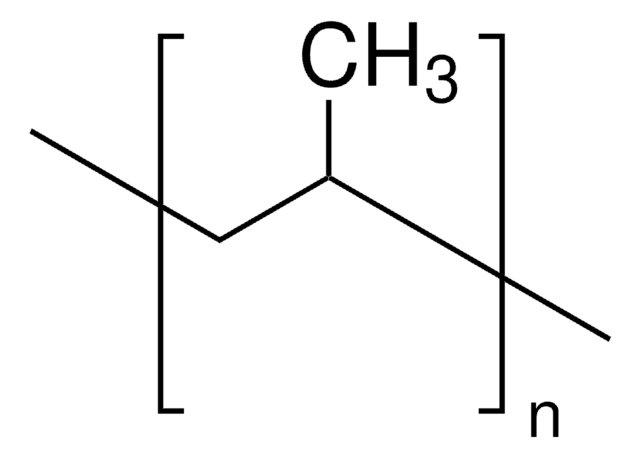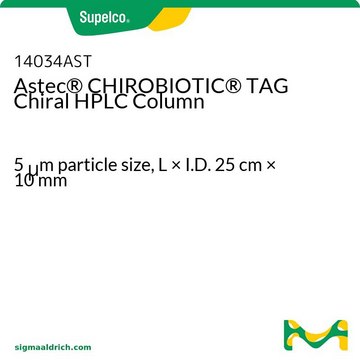53023AST
Astec® CLC-D Chiral (5 μm) HPLC Columns
L × I.D. 15 cm × 4.6 mm, HPLC Column
Sinónimos:
Chiral Separation CLC-D Column
About This Item
Productos recomendados
Nombre del producto
Astec® CLC-D Chiral HPLC Column, 5 μm particle size, L × I.D. 15 cm × 4.6 mm
material
stainless steel column
Quality Level
agency
suitable for USP L32
product line
Astec®
packaging
pkg of 1 ea
manufacturer/tradename
Astec®
parameter
0-50 °C temperature
172 bar pressure (2500 psi)
technique(s)
HPLC: suitable
L × I.D.
15 cm × 4.6 mm
matrix
fully porous particle
matrix active group
chiral bidentate ligand (D-form), requires 5 mM CuSO4 phase
particle size
5 μm
pore size
100 Å
operating pH
3.5-7
separation technique
chiral
General description
Features:
- Separates α-hydroxy carboxylic acids, amino acids and other α-bifunctional compounds
- High selectivity with simple mobile phases
- Copper complex gives strong UV 254 nm signal
- Simple reversal of elution order, CLC-L vs. CLC-D
- Excellent reproducibility
(1) Davankov, V. A.; Rogozhin, S. V. Ligand chromatography as a novel method for the investigation of mixed complexes: Stereoselective effects in a-amino acid copper(II) complexes. J. Chrom. A. 1971, 60, 284-312.
Legal Information
¿No encuentra el producto adecuado?
Pruebe nuestro Herramienta de selección de productos.
Elija entre una de las versiones más recientes:
¿Ya tiene este producto?
Encuentre la documentación para los productos que ha comprado recientemente en la Biblioteca de documentos.
Protocolos
Separation of DL-Tartaric acid, ≥99%
Contenido relacionado
Astec CLC Copper Ligand Exchange Chiral HPLC Columns. The Astec CLC phases are based on coupling an enantiomeric form of an amine to a proprietary Astec derivative to create an appropriate distance for copper coupling.
Chromatograms
application for HPLCapplication for HPLCNuestro equipo de científicos tiene experiencia en todas las áreas de investigación: Ciencias de la vida, Ciencia de los materiales, Síntesis química, Cromatografía, Analítica y muchas otras.
Póngase en contacto con el Servicio técnico






